Caprella angusta Mayer, 1903Common name(s): Skeleton shrimp |
|
| Synonyms: Smith and Carlton (1975) state that Caprella uniforma is probably a junior synonym. ITIS does not list C. angusta at all but does list C. augusta with no range information. | (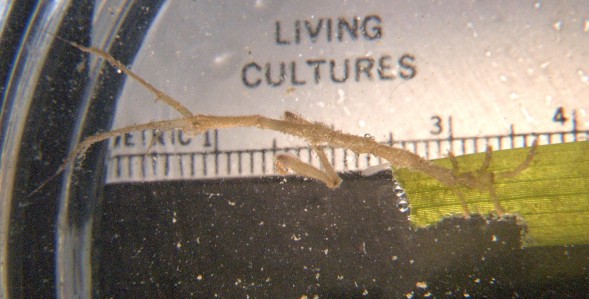 |
|
Phylum Arthropoda
Subphylum Crustacea
Class Malacostraca
Subclass Peracarida
Order Amphipoda
Suborder Caprellidea
Infraorder Caprellida
Family Caprellidae
|
|
| Caprella angusta from eelgrass in Padilla Bay. Total length about 4 cm. One of the ventral flaplike gills is visible posterior to the large grasping gnathopods 2, right at the end of the eelgrass. | |
| (Photo by: Dave Cowles, July 2008) | |
How to Distinguish from Similar Species: Tritella pilimana has a vestigial pereopod on pereonites 3 and 4, while Caprella angusta does not. Several other members of genus Caprella either do not have the large triangular spine on the dorsal side of the head, or also have large dorsal tubercles on their pereonites and gnathopod 2 is attached near the middle of pereonite 2.
Geographical Range:
Depth Range:
Habitat:
Biology/Natural History:
Caprellid
amphipods such as this species are roving predators. We often
find
them climbing on eelgrass or hydroids searching for prey.
With their
large claws (gnathopods)
and bizarre shape they would truly be monsters if they were our size!
| Return to: | |||
| Main Page | Alphabetic Index | Systematic Index | Glossary |
References:
Dichotomous Keys:Kozloff 1987, 1996
Smith and Carlton (1975) (as C. uniforma)
General References:
Scientific Articles:
Web sites:
General Notes and
Observations: Locations,
abundances, unusual behaviors:
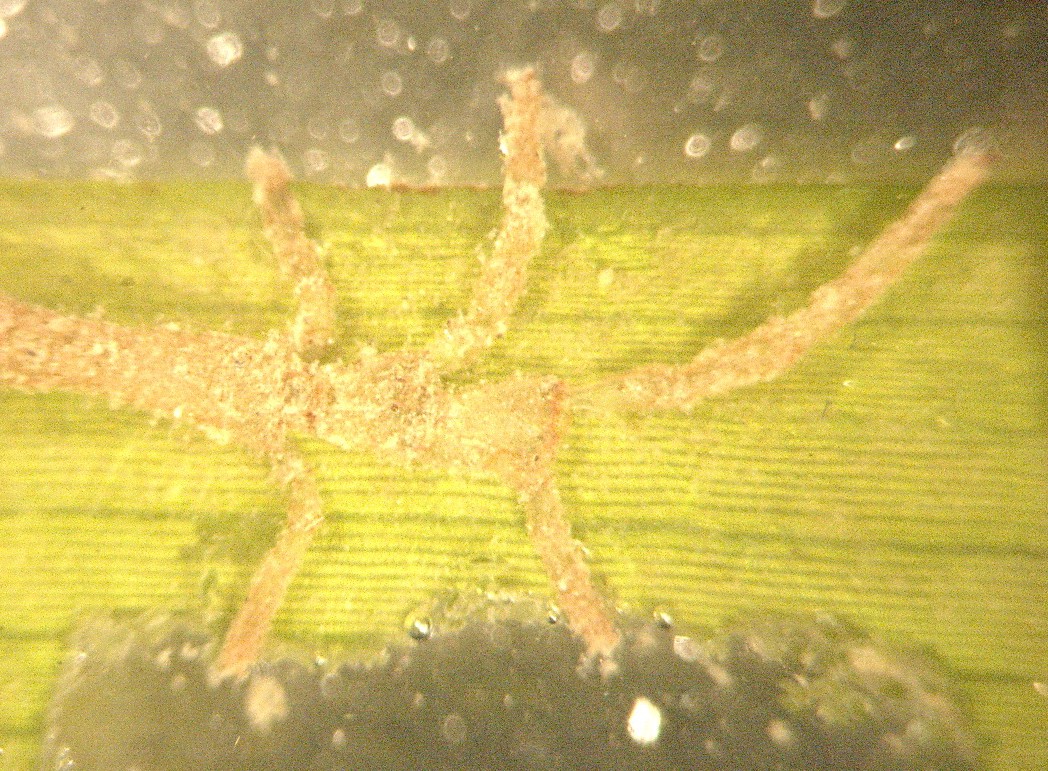
This closeup shows pereonites
5-7 with their appendages, pereopods
5-7. Pereopods
5-7 arise from the posterior end of their segment (pereonite)
and are used for gripping the substrate such as this eelgrass
blade.
The left pereopod
7 is missing.
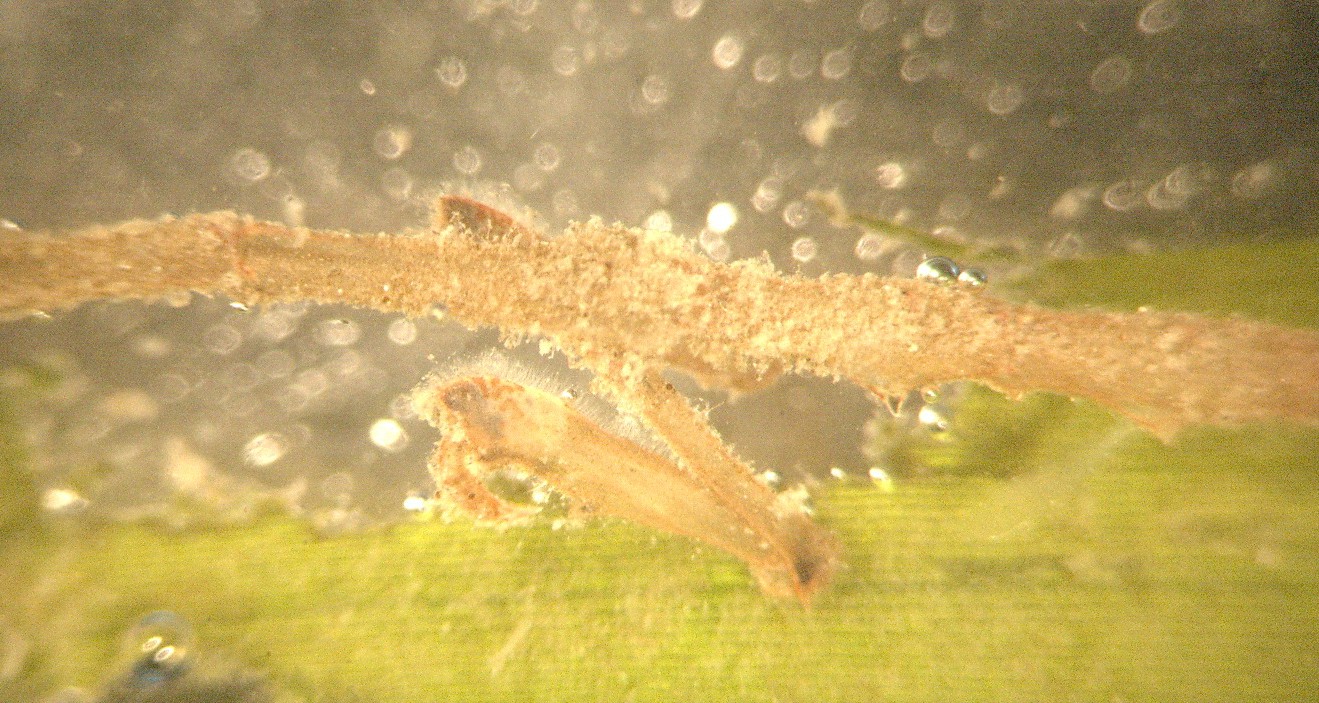
The propodus
of gnathopod
2 is less than 2/3 as wide as it is long. Note also the gill
on the
segment behind.
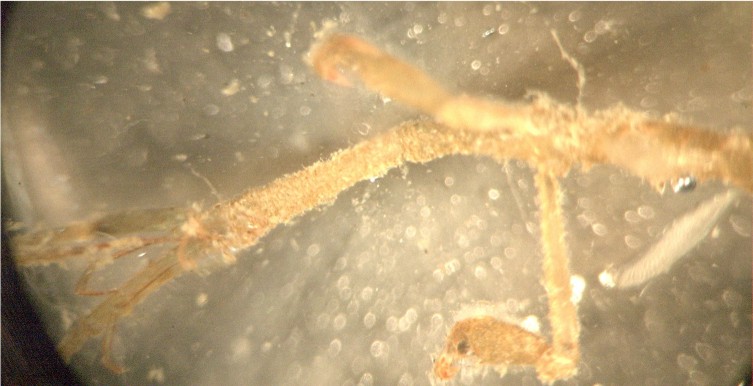
This ventral view shows there is no spine between the large gnathopods
2 and shows the location of the gills.
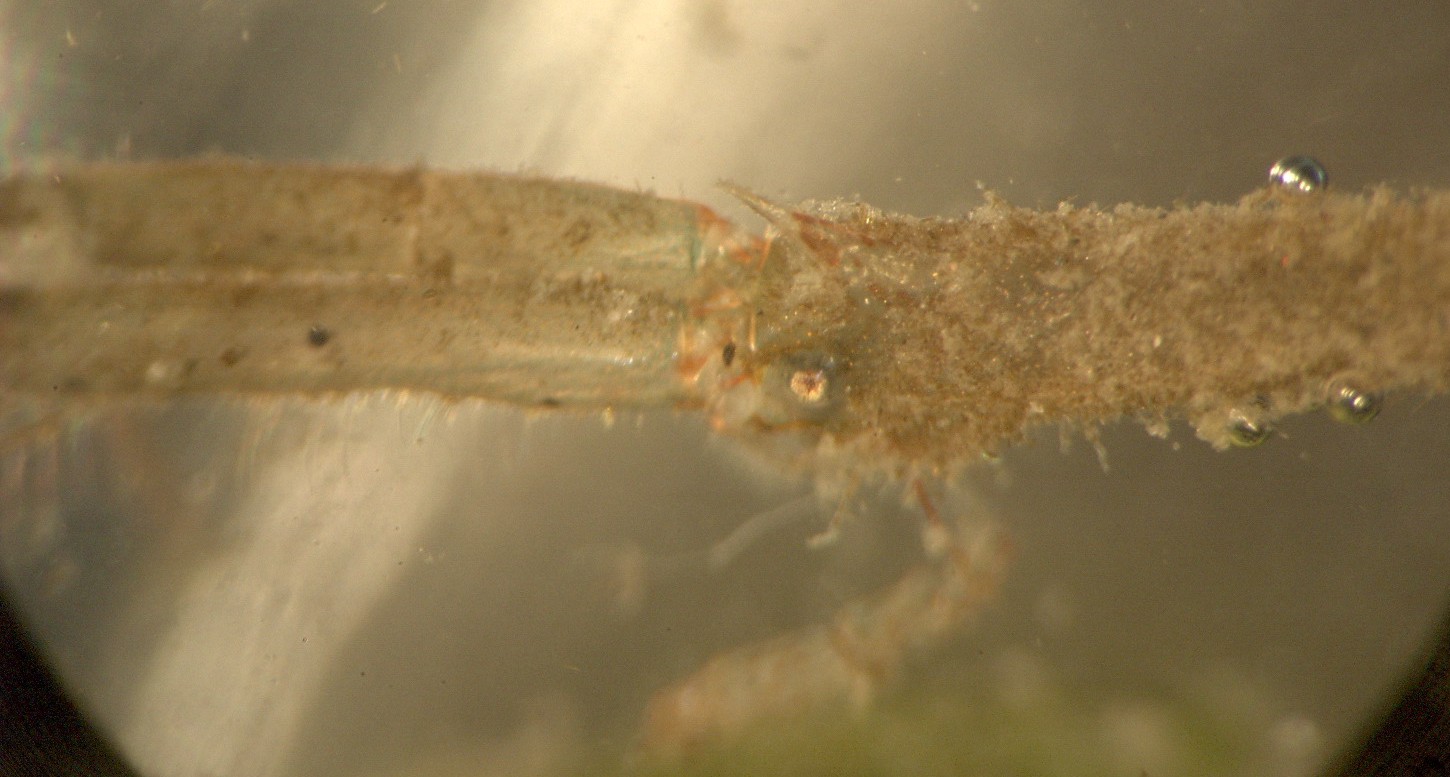
This view of the head (animal is looking to the left) shows the very
large second antennae to the left, then the head with sessile
eyes and prominent, forward-directed head spine. Below the
head can
be seen the first gnathopods
which are on the anterior end of the first thoracic segment (pereonite),
which extends out of view to the right.
Authors and Editors of Page:
Dave Cowles (2008): Created original page
CSS coding for page developed by Jonathan Cowles (2007)